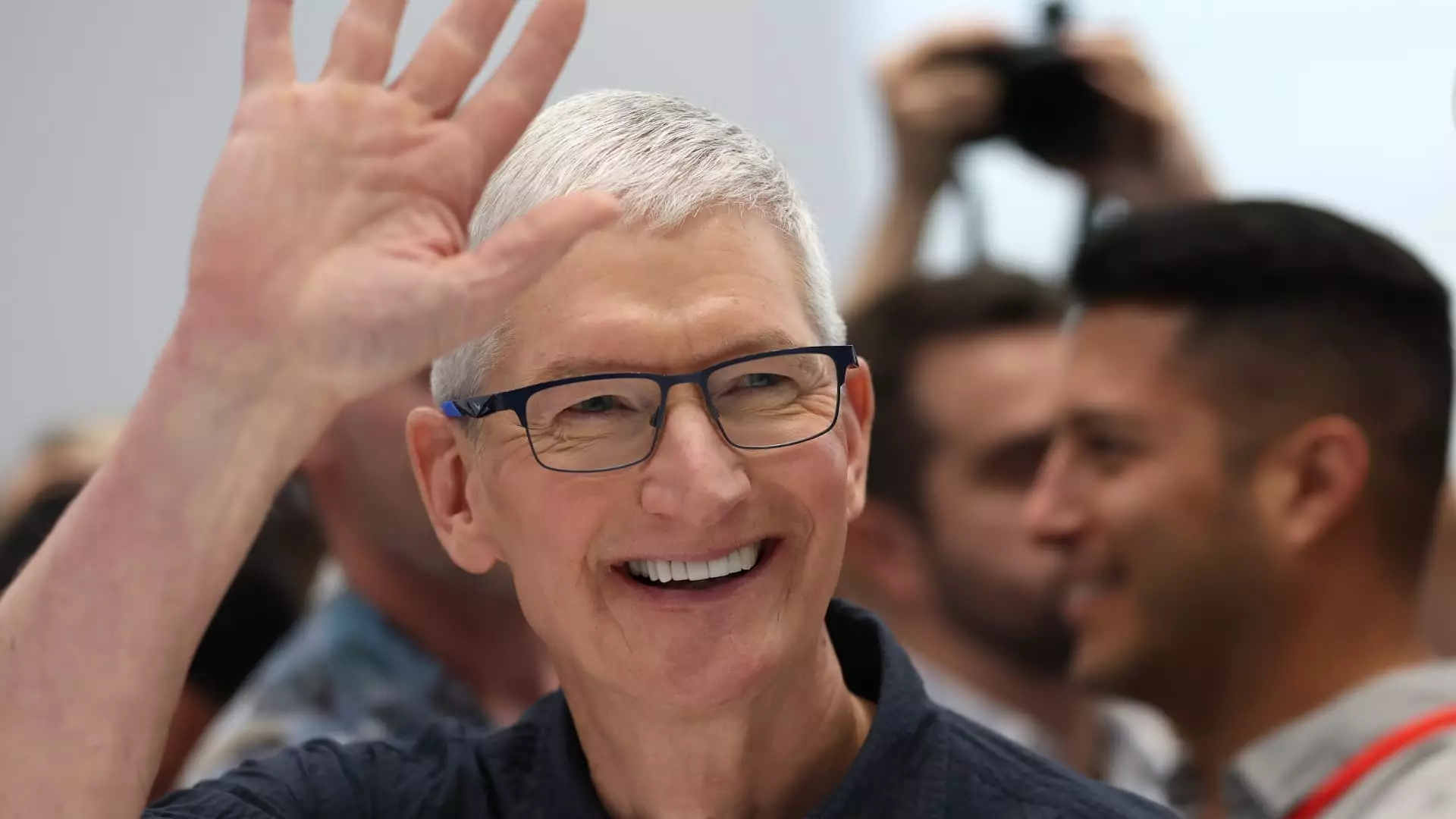Apple Inc. has made headlines recently with its stock reaching an all-time high, demonstrating the company’s resilience in the face of swirling doubts about its product demand. On the surface, the surge appears to be fueled by strong demand for the new iPhone models, particularly the iPhone 16, which integrates artificial intelligence (AI) features. However, the landscape is fraught with contrasting opinions from analysts that merit a deeper exploration to gauge the sustainability of this growth trajectory.
Apple’s recent climb to an intraday high of $237.49 was significantly bolstered by a report from the International Data Corporation (IDC), indicating a 3.5% year-over-year increase in iPhone shipments in the third quarter. With total shipments reaching approximately 56 million, this figure surpassed Wall Street’s forecast of 50 million. Analysts at Morgan Stanley noted a potential revenue boost of $2 billion to $4 billion for the quarter, demonstrating how critical the performance of the iPhone remains for Apple’s overall financial health.
Despite a host of analysts expressing skepticism around the new iPhone 16, the IDC’s findings imply that Apple successfully capitalized on pre-existing customer loyalty and the appeal of its new AI capabilities. The company’s market share held steady at around 17.7%, positioning it closely behind Samsung, which dominated with an 18.3% market share. This competitive landscape highlights Apple’s strong retention of existing customers while also attracting new ones through strategic marketing and promotional activities.
Despite the encouraging data, a narrative of caution surrounds Apple’s market performance. Various analysts, including those from JPMorgan, Barclays, and Bank of America, raised red flags regarding the demand for the latest iPhone models, particularly as reduced shipping times typically point to weaker market interest. Such dissenting opinions underline a prevailing concern that while the iPhone 16 may generate initial excitement, the subsequent sales might not sustain this momentum.
Moreover, the rollout strategy for Apple’s new AI-integrated features, known as “Apple Intelligence,” also presents potential challenges. While the U.S. market appears primed for an upgrade cycle, the staggered international rollout might inhibit global growth patterns, particularly in regions with existing high iPhone penetration. The upcoming holiday season could indeed prove beneficial, but the degree of market penetration remains an open question.
In addition to the iPhone 16 launch, Apple’s announcement of the first update to the iPad mini in three years further underscores the company’s commitment to innovation. With upgraded processors designed to support its AI initiatives, Apple aims to maintain robust engagement across its product ecosystems. This reflects a short-term strategy to entice existing users to upgrade, while also appealing to tech enthusiasts eager to leverage the latest advancements.
Importantly, the company’s historical pattern suggests that once a major product cycle kicks off—especially one that incorporates generative artificial intelligence—the market can experience prolonged heightened interest, leading to increased sales and investor confidence. As current analysts have noted, meeting or exceeding for the upcoming quarter’s expectations could initiate a bullish trend for Apple’s stock, reaffirming Jim Cramer’s “own it, don’t trade it” philosophy.
Ultimately, while the immediate metrics look favorable for Apple, the long-term sustainability of its growth remains uncertain. The contrasting views among analysts could lead to volatility in stock performance as market perceptions shift based on the company’s ability to translate new technology into consumer adoption.
Investors should maintain a careful watch on upcoming product releases and revisit sales metrics frequently. Moreover, as Apple steers into a future increasingly intertwined with artificial intelligence, continuous innovation will be necessary not just for product success but also for maintaining its competitive position against rivals like Samsung.
While Apple has successfully navigated the immediate challenges to achieve remarkable stock performance, its future leadership in the global market hinges on its ability to ensure sustained demand for its diverse portfolio of high-tech products. As we navigate deeper into the AI era, the company must skillfully transform technological advancements into tangible consumer interest, ensuring that its growth story continues in the long run.

